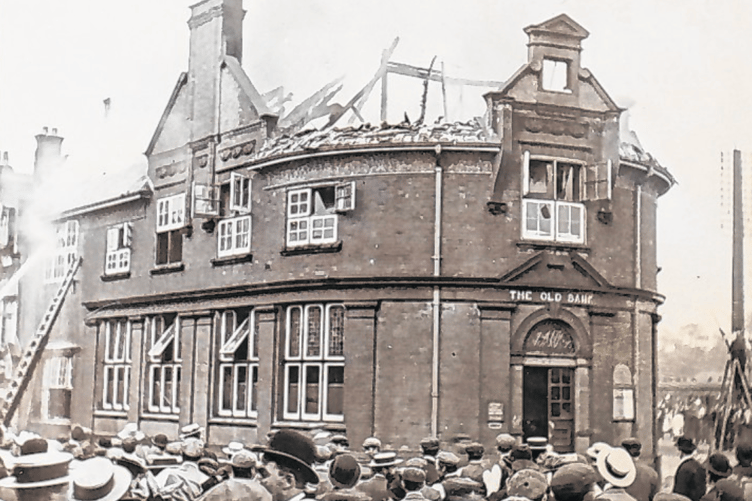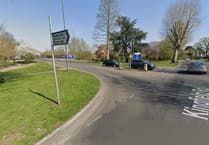We continue with the story of banks, this time looking at those in Woking, kindly written by Trevor Howard.
Thomas Ashby & Co
Thomas Ashby, a Quaker, had moved to Staines from Northamptonshire in about 1757.
He quickly prospered and bought Hythe End Mill at Wraysbury, where he ground flour.
Thomas started Staines Bank, trading as Thomas Ashby & Co, in 1796. The bank issued its own notes, of £1, £5, £10, £20 and £50 denominations.
The bank grew until it eventually had nine branches and 13 sub-branches in the surrounding districts: Staines (Middlesex), Addlestone, Ascot (Berkshire), Ashford (Middlesex), Bagshot, Byfleet, Chertsey, Chobham, Colnbrook (Bucks), East Molesey, Egham, Englefield Green, Feltham (Middlesex), Hampton (Middlesex), Hersham, Sunbury (Middlesex), Sunbury Common (Middlesex), Thames Ditton, Walton-on-Thames and Woking.
In 1880, Thomas Ashby & Co opened in Commercial Road, Woking – near the corner with Chobham Road, later Gammons – running an offshoot of the Chertsey branch.
The manager, AT Frampton, was in attendance on Wednesdays and Saturdays from 11am to 3pm – the new town of Woking was not yet providing much business!
On January 28, 1891, Ashby’s acquired the building at 1 Chertsey Road, Woking. The upper floor of Ashby’s new branch building also housed the original offices of Woking Urban District Council.
The council was in the process of building new premises in Commercial Road when, on June 6, 1899, its offices above Ashby’s Bank were burnt out.
This was ironic as the council was, at the time, reluctant to pay for a new fire station!
The building was rebuilt with three storeys replacing the original two.
On January 1, 1904, Thomas Ashby & Co was sold to Barclays Bank. John Ashby became a Barclays local director at Staines, a position he held until he retired in 1913.
The 16 partners in the bank from 1796 to 1903 were Thomas Ashby and 15 of his direct descendants, all with the surname Ashby.
Barclays continued to trade from those same premises until 1990. The building has had a couple of cosmetic facelifts during those 86 years but has remained largely unchanged, structurally. It is locally listed as being of Townscape Merit.
After Barclays vacated the building, it became home to one of the first Fatty Arbuckle’s franchises. Since 1998, it has been home to first Alldays and then Budgens grocery stores.
Capital & Counties Bank
With its manager William Power Trench, it opened at 4, High Street in February 1888. It was taken over by Lloyds Bank in 1914.
London & South Western Bank
This bank opened a branch at 2, Chertsey Road in 1901. It merged with the London & Provincial Bank in 1917, to become the London Provincial & South Western Bank Ltd. It was taken over by Barclays in 1918.
London & County Bank
It opened a branch at 47, Chertsey Road (then No 23) in 1904, and merged with the London & Westminster Bank in 1909, to become London County & Westminster Bank Ltd.
London & Westminster Bank
A branch of this bank opened at 1, High Street in 1904. It merged with London & County Bank in 1909, to become London County & Westminster Bank Ltd.
In 1918 it merged with Parr’s Bank to form London County Westminster & Parr’s Bank Ltd. This name was shortened to Westminster Bank Ltd in 1923.
In 1968, the bank announced plans to merge with National Provincial Bank. The two banks continued to operate separately until January 1, 1970, when they became National Westminster Bank.
Midland Bank
It opened a branch at 8, Chertsey Road in 1923. Midland Bank was bought by HSBC in 1992.
National Provincial Bank
This one opened a branch at 5, Chertsey Road in 1930. It merged with Westminster Bank in 1970 to form National Westminster Bank.
Woking Trustee Savings Bank
In May 1944 it opened a branch at 5, Chobham Road, as a branch of Reading Trustee Savings Bank. Local savings banks went through a continual process of amalgamation and, in 1948, the Woking TSB became a branch of the Thames Valley Trustee Savings Bank.
Historically, individual savings banks had been largely independent of one another.
However, this all changed with the TSB Act of 1976. The Act stipulated the 73 existing savings banks should merge into 20 (later 16) regional institutions.
Crucially, the Act also allowed TSBs to offer similar financial services to those of the clearing banks, such as personal loans.
TSB Group was floated on the London Stock Exchange in 1986. For the first time, it had shareholders and could compete with other high street banks on an equal footing.
TSB merged with Lloyds Bank in 1995 and de-merged in 2013.
District Bank
It opened a branch in 1965 at Harland House, 44, Commercial Road. In 1962, the bank had been acquired by National Provincial Bank, but it continued to operate independently until 1968.





Comments
This article has no comments yet. Be the first to leave a comment.